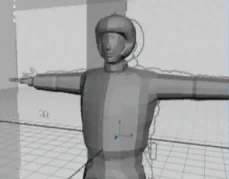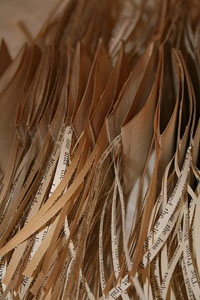Harper’s has a new web concept designed by Paul Ford of F Train. History bears heavily on the refurbished site, almost overwhelmingly — especially compared to the stripped-down affair that preceded it. But considering that Harper’s has a more than ordinary amount of history to cart around — at 157 years, it’s the oldest general interest monthly in the United States — it makes sense that Ford and the editors had time on the brain. A journal that has published continuously since before the Civil War, on through Reconstruction, the Gilded Age, WWI, the Great Depression, WWII, civil rights, the 60s, the Cold War, right up to the present carries a hefty chunk of the national memory — and a lot of baggage, good and bad. So it’s fitting that the new design is packed with dates, inviting readers to dig into the past while also surveying the present. I can’t think of another news site in which the archives mingle so promiscuously with the front page spread. The result is a site that feels as much like a library as a periodical.
![]()
Directly beneath the title banner and above stories from the current issue is a highly compressed archive navigation, three rows tall. On the top row, Harper’s 16 decades fan out from left to right. Below them are the ten years of a given decade. Below that, the twelve months of a given year. Thus, every issue of Harper’s ever printed is just three clicks away. Of course, you need a subscription to view most of the content. (A hint, though: articles between the 1850 debut issue and 1899 are all available for free at the website of Cornell’s Making of America project, which undertook the task of scanning the first half-century’s worth of Harper’s.)
Clearly, the editors have been thinking a great deal about how to use the web to bring Harper’s‘ long, winding paper trail into the light and into use. The new design may be a little over-freighted, but shine light it does. By placing current events in such close proximity with the past, things are nested in a historical context — a refreshing expansion of scope next to the perpetual present of the 24-hour news cycle. Already there are a few features that help connect the dots. One is “topic pages” that allow readers to track particular subjects through the archive. Take a look, for example, at this trail of links for “South Africa”:
- 4 Images from 1983 to 2001
- 67 Articles from 1850 to 2007
- 2 Cartoons from 1985
- 44 Events from 2000 to 2007
- 10 Facts from 1999 to 2006
- 4 Stories from 1888 to 1983
- 2 Jokes from 1881 to 1912
- 4 Photographs from 1987 to 2001
- 1 Poem from 1883
- 6 Reviews from 1887 to 2005
A smart next step would be to let readers trace, tag and document their own research trails and share those with other readers. This could be an added incentive for a new generation of Harper’s subscribers: access not only to an invaluable historical archive but to a social architecture in which communities and individuals could interpret that archive and bring it into conversation with the contemporary.

 Well I just came across a very intriguing UK-based project that might qualify as a wiki-game, or more or less the equivalent. It’s called
Well I just came across a very intriguing UK-based project that might qualify as a wiki-game, or more or less the equivalent. It’s called 
 Joan Acocella has an interesting
Joan Acocella has an interesting 